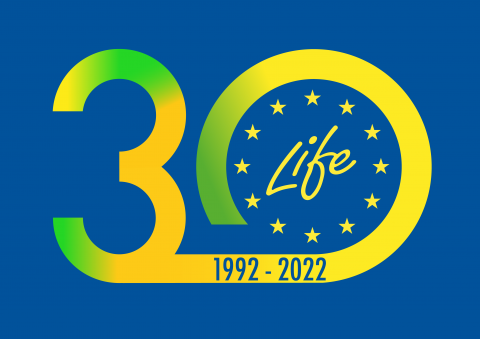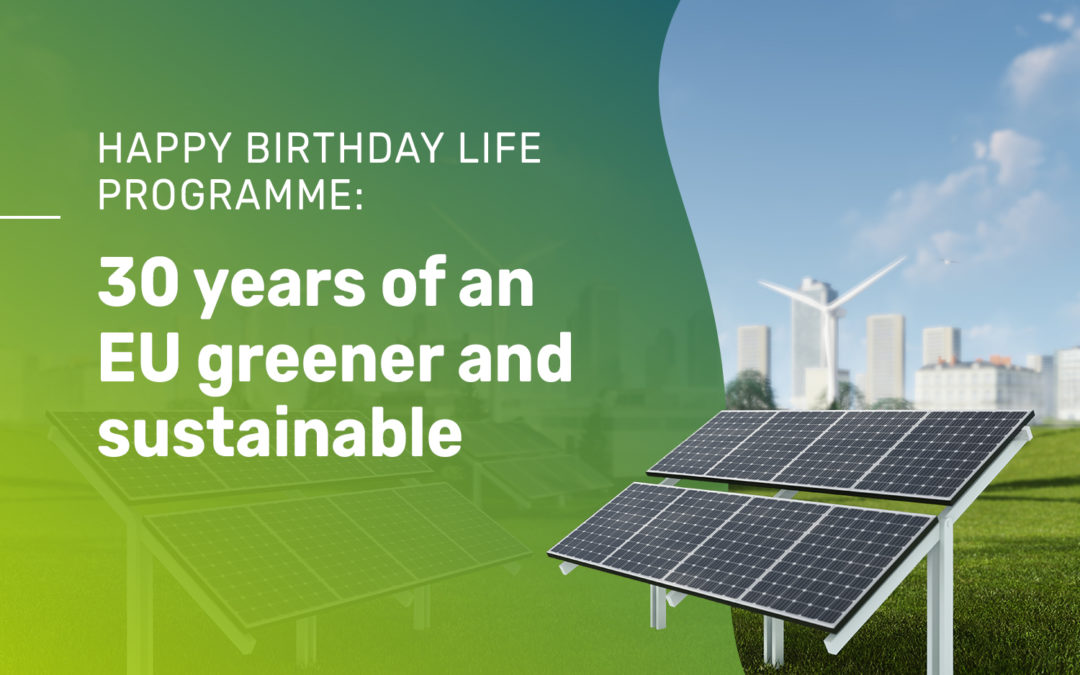Happy Birthday LIFE programme: 30 years of an EU greener and sustainable
On 21 May 2022 the Life programme turned thirty!
Launched for the first time the 21 May 1992, LIFE is the European Union’s funding instrument for the environment and climate action, whose general objective is to contribute to the implementation of the EU environmental and climate policy and legislation, co-financing green projects ideas.
In fact, in 30 years of activity LIFE has supported more than 5 500 projects across the EU, contributing over €7 billion to the protection of the environment and biodiversity.
Supporting EU’s climate action, including the transition to renewable energy, the creation of green job, and biodiversity protection, the LIFE programme counts five already completed cycles, while the sixth one is ongoing.
Committed to boost the transition towards a more circular economy, the programme has developed and promoted innovative techniques and approaches knowledge in each domain of activity, supporting the dissemination of greener ideas and good practices.
The main goals achieved in these years of activity range from a large-scale deployment of successful technical and policy-related solutions, as for instance the Natura 2000 network, to further engage civil society as well as the mobilisation of investment from the private and public sector.
While following a common thread, each cycle of LIFE contributed to improving the programme, enriching, and innovating it.
Let’s see what the main achievements of each LIFE’s stage are!
The pilot programme, named LIFE I ran from 1992 to 1995, and had different detailed priorities, such us:
- promotion of sustainable development and quality of the environment,
- protection of habitats and of nature,
- education, training, and information towards green economy.
During its lifetime, LIFE I funded over 700 projects, mostly relating to the textile, tannery, paper and agro-food industries, waste reduction, recycling, transport, and tourism, contributing incredibly to the modernisation of environmental monitoring networks.
Benefiting from an increase of the budget, LIFE II, lasted from 1996 to 1999, contributed to the innovation of policy implementation in the fields of environmental monitoring, clean technologies, waste management and the improvement of the urban environment.
In line with the work started with II, LIFE III – from 2000-2006, focused on supporting the implementation of the Birds and Habitats Directives, strengthening the action of Natura 2000 network, and promoting the conservation of natural and wild habitats of EU’s fauna and flora, while taking into account the economic, social and cultural requirements and specific regional and local characteristics of each Member State.
LIFE +, from 2007 to 2013, hosted one call for proposals per year and was divided into three different components such as Nature and Biodiversity, Environment Policy and Governance, and Information and Communication.
To assure concrete action and efficiency, public procurement and grants were redefined, increasing flexibility meeting projects and policy needs.
The LIFE 2014-2020 deployment followed two sub-programmes, namely the Environment and the Climate Action. The Action generally worked as a driver for green education, skills, creating sustainable jobs in many sectors of the economy: from highly qualified architects, chemical engineers, and ecologists to skilled manual labour (e.g., builders, ship dismantlers, park wardens, aqua-culturalists) and low-skilled labour in centres for reuse and recycling.
The 2021-2027 LIFE programme benefits from a bigger budget that the previous phases of LIFE’s programmes, and has an increase of sub-programmes from two to four:
- Nature and Biodiversity,
- Circular Economy and Quality of Life,
- Climate Change Mitigation and Adaptation,
- Clean Energy Transition.
While the action on environment and biodiversity has been strengthened, the programme enlarged to a wider list of Third Countries, providing activities outside the EU while directly supporting the Green Deal and the transition towards a circular economy.
With a total budget of 5.4 billion, LIFE 2021-2027 is also committed to prepare at least one call for proposal for each year, so do not miss this incredible funding opportunity: contact us to find out more about how you can benefit from LIFE!

For further details, please feel free to contact the EUFUNDINGHUB.
EU funding news and articles. All new articles in one place!
Do you want to read all the articles ahead ? Subscribe now and receive our online magazine each month!


Recent Comments